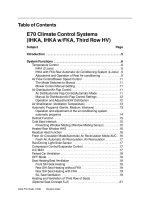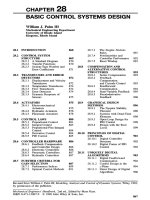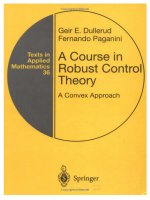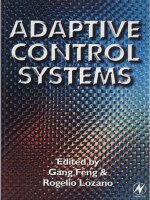toyota training course t874 engine control systems II ch04
Bạn đang xem bản rút gọn của tài liệu. Xem và tải ngay bản đầy đủ của tài liệu tại đây (989.81 KB, 4 trang )
Section 4
Engine Control Systems
Slide 25
T852f001
Air Induction Air induction systems measure and control the air entering the cylinders.
Systems They include:
•The air flow sensor (commonly called the mass air flow sensor)
measures air after it has been filtered by the air cleaner.
•The throttle valve regulates the volume of air entering the induction
system (based on driver demand).
•The air intake chamber and intake manifold are tuned for efficient
engine operation.
There are many variations on the basic air induction system, such as:
•Electronic Throttle Control System-intelligent (ETCS-i) allows the
ECM to adjust throttle opening according to driver demand and
vehicle conditions.
•Acoustic Control Induction System (ACIS) allows the ECM to vary
the effective intake runner length for better engine performance.
•Variable Valve Timing-intelligent (VVT-i) allows the ECM to adjust
when the valves open for optimum engine performance at varying
speeds.
Toyota Engine Control Systems I
Course 852
23
Fuel Systems
Engine Control Systems
Slide 26
T852f002
Fuel Systems Fuel systems deliver the correct volume of fuel to the cylinders to satisfy
a variety of engine operating conditions.
Fuel system components include:
•A fuel pump pressurizes fuel for use by the fuel injectors.
•A fuel pressure regulator, located in the fuel tank or after the
injectors, regulates fuel pressure.
•The fuel injectors, when on, allow fuel to flow into the intake
manifold.
The ECM calculates:
•How much fuel to be injected
•When to inject fuel
These calculations are based on a variety of factors, primarily intake air
volume and temperature. The ECM also calculates fuel injection duration
and timing based on engine RPM, crankshaft position, and engine load.
Other system components that modify fuel injection operation are detailed
in the Fuel Systems section.
24
TOYOTA Technical Training
Ignition Systems
Engine Control Systems
Slide 27
T852f003
Ignition Systems The ECM is programmed to monitor engine operating conditions and
determine the optimum time to ignite the air/fuel mixture.
•Based on a signal from the ECM, the igniter starts and stops current
through the ignition coil(s) by providing and taking away a path to
ground.
•When coil current is turned OFF, high voltage is generated in the
coil.
•High voltage applied to the spark plug creates the spark needed for
ignition.
Toyota Engine Control Systems I
Course 852
25
Exhaust and Emission Control Systems
Engine Control Systems
Slide 28
T852f004
Exhaust/Emission Control
Systems
The ECM manages systems and components to meet state and federal
regulations. Systems may include:
•The evaporative system (EVAP) prevents hydrocarbons (HC) from
entering the atmosphere.
•Variable Valve Timing with intelligence (VVT-i) improves engine
performance while lowering engine emissions, primarily oxides of
nitrogen (NOx).
•The fuel control program adjusts the air/fuel ratio so the catalytic
converter runs at peak efficiency. This lowers HC, carbon monoxide
(CO), and NOx emissions.
•The exhaust gas recirculation system (EGR) feeds a small amount
of exhaust gas back into the air induction system to reduce
combustion chamber temperature, lowering NOx. EGR has been
phased out as other control systems accomplish the same function.
26
TOYOTA Technical Training









